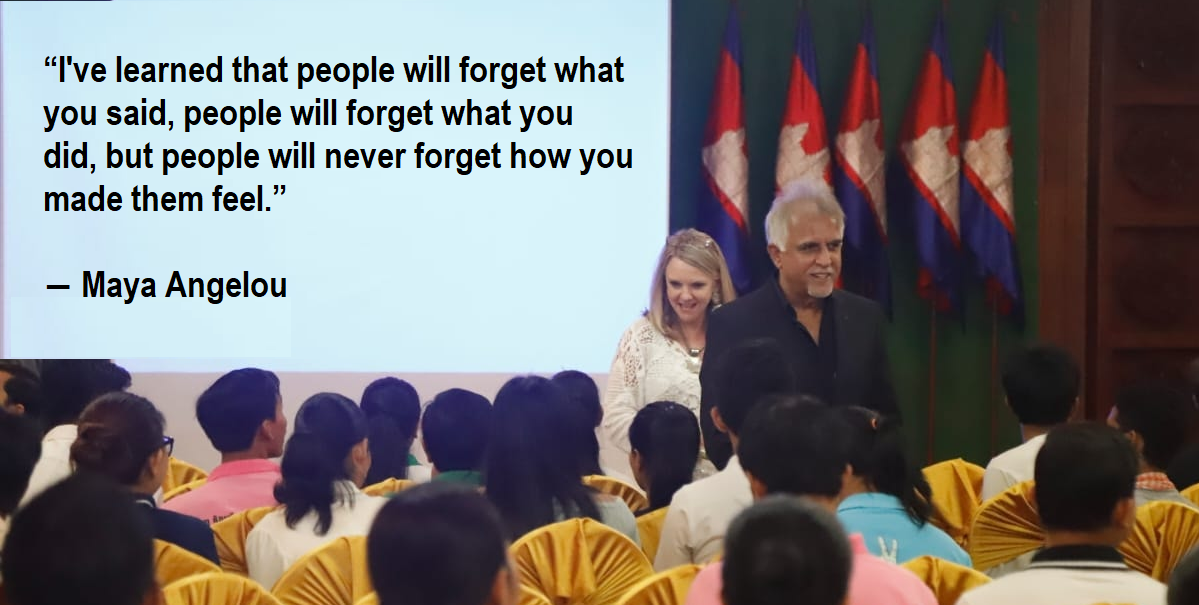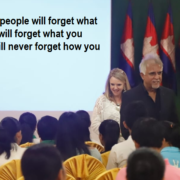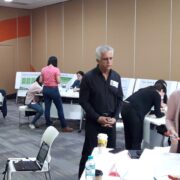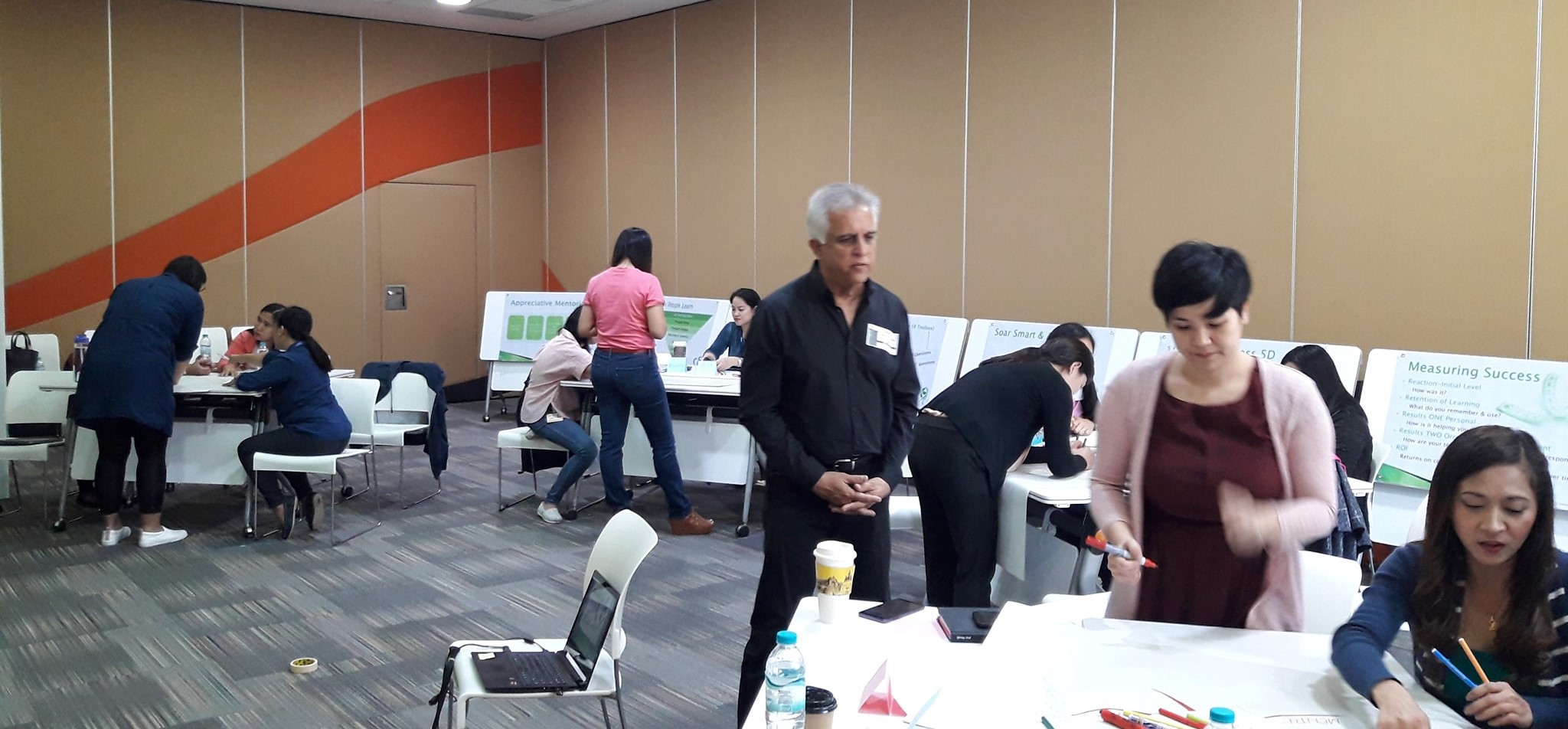Love and Leadership
A few years ago, at a convention of the Asian Professional Speakers Singapore, the usual topic of what makes a good speaker great came up. And, as usual, words like integrity, service-orientation, professionalism, value-creation, mastery of the craft, etc. were thrown into the discussion.

Love and Leadership
Then out of nowhere a small voice, like from under the table, says “to be able to deliver a really good keynote, one must love the audience.”
And, bang, every other word that was dumped onto the table gets withdrawn back and people go, “Yeah, that’s right. We ought to love the audience, the people we talk to!” “Yep,” adds another, “when we love them then we feel comfortable with them, they feel good in our presence and the creative energy goes aflame!” “We get into the zone, into the flow,” adds the original, small voice happily, still as if coming from under the table.
Over the years, and across the thousands of times I have spoken to an audience large and small, I bring the memory of that conversation with my friends at the APSS to the desktop of my mind every time someone hands me a microphone. “Love the audience, the people Raju,” I say to myself several times over. As many times, I look up, look at the audience make eye contact and connect with someone a smile crinkles my eyes and he or she smiles back. It feels good. It softens me. It eases my spirit, caresses my ego, and, in the bargain, allays all anxiety. As I take the steps up towards the lectern or the red circle, a desire to serve, to be open, to become vulnerable engulfs me. I feel light and happy and empowered all at the same time. The neuroscientists will claim I feel loved, thus a rush of the dope, oxytocin floods my brain cells that is why I feel light, happy and empowered.
When I feel that way with the microphone in my hand on stage, my words, my voice, my gestures, my eyes, my larger bodily movements spark of the same sensations through and across everyone who can hear, see and sense me. The neuroscientists will claim that those are mirror neurons reflecting and mimicking the activities in my neural networks.
I do not care what the neuroscientists say but I am feeling good. I feel, light, happy and powerful. My people, who I love, feel light, happy, and empowered. It becomes a dance. It stays a dance of learning, co-creating, and growing.
This is not true just for people who grab a microphone, step up on stage and make the audience sway to their words. This is true for any individual who wants to serve, lead, and change the world. To connect, engage and influence our worlds we ought to truly care for our worlds, our people. The deepest of our intentions then works for the benefits and betterment of others. Call it to care, call it empathy or call it compassion, it really is love in its agape form.
Most all the time the people we want to connect, engage and influence is usually looking and sensing behind and beyond our appearances, our communication, and our behaviors. They are, usually, looking behind and beyond our skills, our abilities; they are looking at our intentions, our deepest desires towards them and their worlds. Once they hear, see and sense benevolence and good intentions then they not just simply sway with us but begin to march towards a brighter future.
You may have heard this from Mary Lou Angelou many times before and it makes for precision when it comes to public speaking and love. It makes for massive sense when it comes to leadership and love. Here it is, “People will forget what you said, people will forget what you did, but people will never forget how you made them feel.”
Beyond your words and well-manicured behaviors, people will always see and sense what exactly is going on in the deepest parts of your heart for them. When they are convinced that what is cooking in the heart-pot of yours they will lick their lips, raise their faces up into the air, and love you back for loving them truly and loving them right.
So on this day of love and love-giving, take a moment to reflect upon what are you trying to change around you and among your networks. Are you changing it out of the true and deep love for the recipients of that change?
Reflect deeply and truly and if the answer from within you is a resounding yes then go, grab that microphone, step up on that lectern, look the ZOOM camera in the eye and state your case. When your case is loaded with love, you shall shine, you shall lead and you shall change your world.
On February 24, inspired by my book-the HeART of Public Speaking, I am running an open to the public webinar on how to connect, engage and influence your world on virtual platforms like ZOOM. Send me a message and I will send you a free invitation.
Live well, love much, and laugh often even if your voice sounds as if it is always emerging from under a table.




















